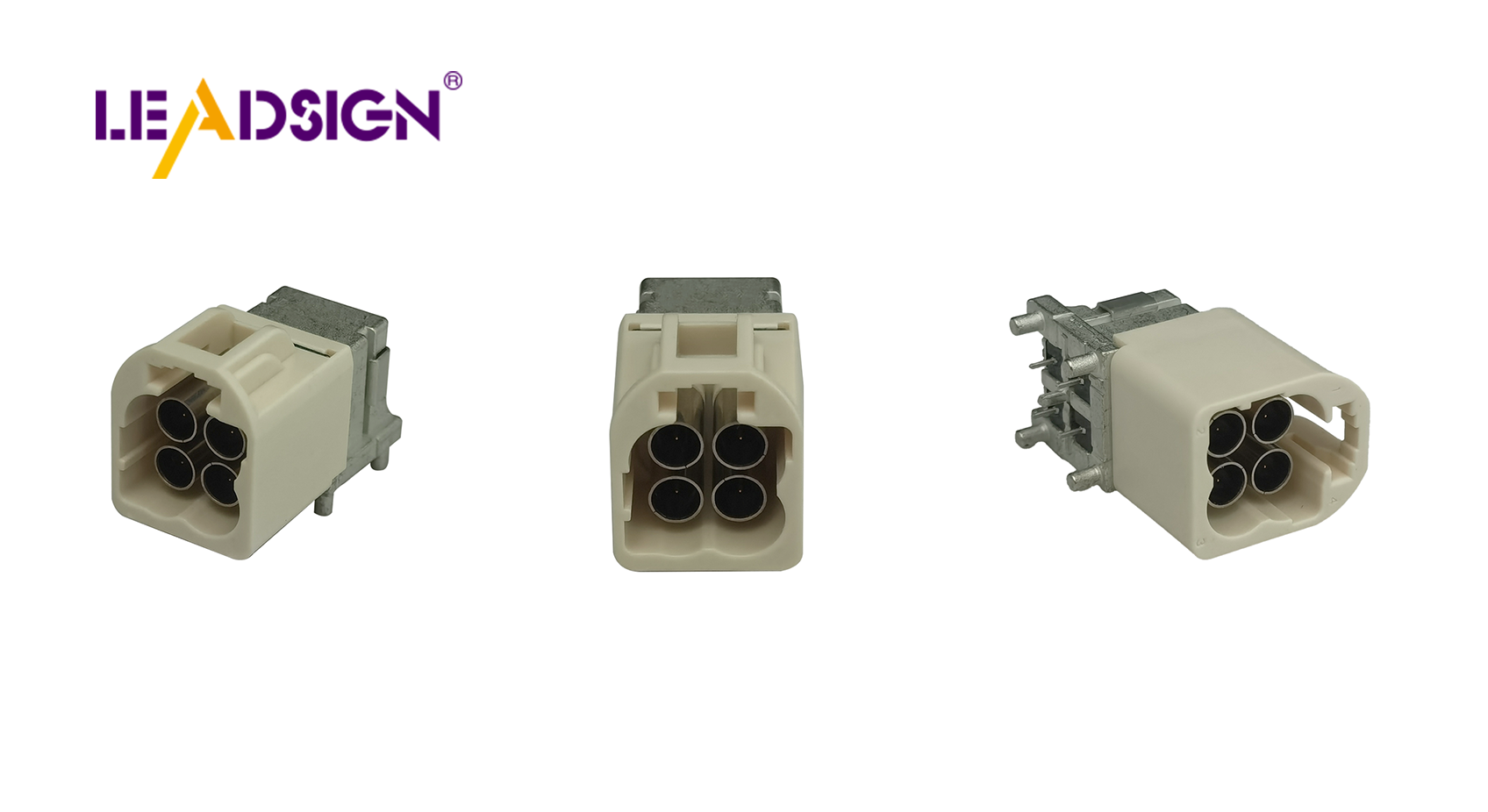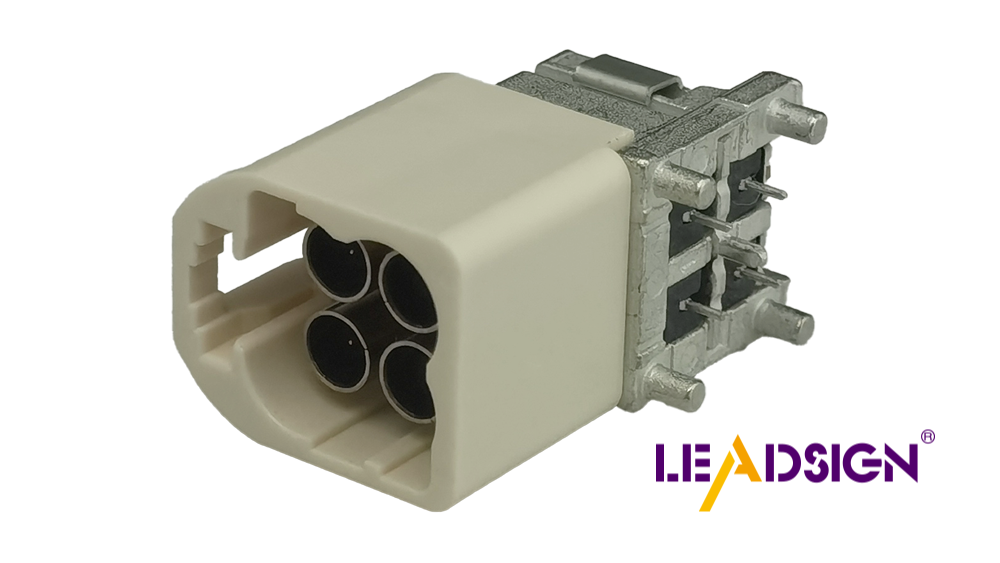Understanding Automotive Electrical Connectors Types: A Comprehensive Guide

Automotive electrical connectors are crucial in modern vehicles, facilitating communication between various components such as the engine and the audio system. These connectors ensure optimal functionality, maintaining the car's safety and smooth operation. As the demand for more connected and user-friendly vehicles increases, the need for these connectors is rapidly expanding. In 2023, the global market was valued at USD 6.89 billion and is projected to grow at a rate of 6.7% annually until 2030. Understanding the different automotive electrical connectors types is essential for anyone involved in automotive technology.
Automotive Electrical Connectors Types

Blade Connectors
Design and Functionality
Blade connectors, also called spade connectors, have a flat metal piece. This piece fits into a matching slot. The design makes the connection strong and safe. The metal part conducts electricity well, so it sends signals easily. Blade connectors come in different sizes for various wires, making them useful for many tasks.
Common Applications
Blade connectors are used a lot in cars because they are easy to put in and take out. They are often found in fuse boxes and lights where quick removal is needed. Their tough build works well where there is shaking or movement, like near engines.
Pin Connectors
Design and Functionality
Pin connectors have several pins that match with sockets. This lets them connect many things at once in one housing. The pins keep the connection steady even if there is movement or shaking. Pin connectors can be customized to fit different electrical needs.
Common Applications
Pin connectors are common in engine systems, sensors, and lights. They handle many connections, which is great for complex car systems needing good communication between parts. These help make sure important systems like engine controls work right.
Butt Connectors
Design and Functionality
Butt Connectors join two wires straight together securely and safely covered. Their tube shape lets wires go in from both ends before crimping tight for a firm hold. This stops electrical shorts and keeps the connection stable.
Common Applications
Butt connectors are used when wires need to stay connected permanently in cars. They are seen in wiring harnesses and audio systems where a strong link matters most. Their cover keeps out water and rust, so they work well even in tough places.
Ring and Spade Connectors
Design and Functionality
Ring and Spade Connectors are important in car electrical systems. They have a metal ring or spade that fits over a bolt. This makes a strong connection. The design keeps power flowing well. The ring goes all around the bolt, so it stays tight even if the car shakes. The spade is open-ended, so it's easy to take off without removing the bolt.
Common Applications
In cars, these connectors are used for batteries, grounding, and starters. They stay connected even when things shake or get hot. Ring connectors hold battery cables tight for steady power. Spade connectors are easy to use where quick removal is needed, like fuse boxes. These connectors show how different types help cars work better.
Things to Think About When Picking Connectors
Choosing the right automotive electrical connectors means looking at important things. These help make sure connectors work well in different places.
Weather Conditions
Heat Resistance
Cars can get really hot or cold. Connectors need to handle these changes to keep working. Good connectors don't break in heat or cold. For example, near engines, they must stay strong even when it's very hot.
Water and Rust Protection
Water and rust can harm electrical parts. Connectors with special covers stop water and rust from getting in. This is key for connectors outside the car, like under the hood. Waterproof ones last long in tough spots.
Power Needs
Current and Voltage Levels
Connectors should fit the power needs of the system. Each type has limits on current and voltage it can handle. Picking right stops overheating and keeps things safe. Big power connectors are needed for batteries; smaller ones work for little circuits.
Keeping signals clear matters for sensors and communication tools. Connectors should keep signals strong without losing them. Good materials help send signals better. This is important in cars with fancy electronic systems.
Keeping signals clear matters for sensors and communication tools. Connectors should keep signals strong without losing them. Good materials help send signals better. This is important in cars with fancy electronic systems.
Physical Factors
Strength and Life Span
Strength makes sure connectors handle stress and shaking well. Strong ones stay connected even when it's rough around them. Ring Terminals give a solid link great for grounding batteries, staying tight despite shakes.
Easy to Put In
Easy installation helps with fixing things fast. Spade Terminals come off quickly, good for parts you check often. This cuts down time fixing stuff, making repairs quicker later on.
Knowing these helps pick the best automotive electrical connectors for jobs needed. By thinking about weather, power needs, and physical factors, cars run better and last longer.
Common Problems and Fixes
Connector Problems
Why They Happen
Car connectors can break for many reasons. Heat makes materials weak, causing bad connections. Car shakes can loosen them, stopping power flow. Water and rust are big problems too, especially outside the car. These issues make systems act weird or stop working. Also, signals can get messed up by other electric stuff.
How to Stop Problems
To keep connectors working, check them often. Look for rust or loose parts. Use ones that handle heat and shaking well. Put special grease on them to fight water and rust. Clean them often and make sure they fit tight to last longer. Doing this keeps car systems running well.
Finding and Fixing Issues
Spotting Bad Connectors
Finding bad connectors needs careful checking. First, look at them for breaks or rust. Use a tool to check if electricity flows right through them. If things work sometimes but not always, move the connector gently to see if it’s loose. Listen for strange sounds or smells that mean overheating.
Fixing or Changing Them
Once you find a bad connector, fix it or get a new one. For small problems like loose parts, tightening might help. If there’s lots of rust or damage, replace it with one just like the old one to keep things working right. When changing it, strip wires carefully and use the right tools to attach the new one securely. Test everything after fixing to make sure it's all good.
Understanding car electrical connectors is important for keeping cars working well. This guide looked at different connector types, where they are used, and what to think about when picking them. As technology gets better, we might see smaller and more efficient connectors, like the High-Speed FAKRA-Mini. These offer fast data speeds and save space.
"There is no one way to fix a connector," shows why knowing specific problems and fixes matters.
To learn more, check out resources on finding and fixing connector issues to keep cars running their best.
See Also
A Detailed Look at Ford Fakra Connectors
Exploring HSD Connectors in Depth
Essential HSD Connector Knowledge for Auto Sector

